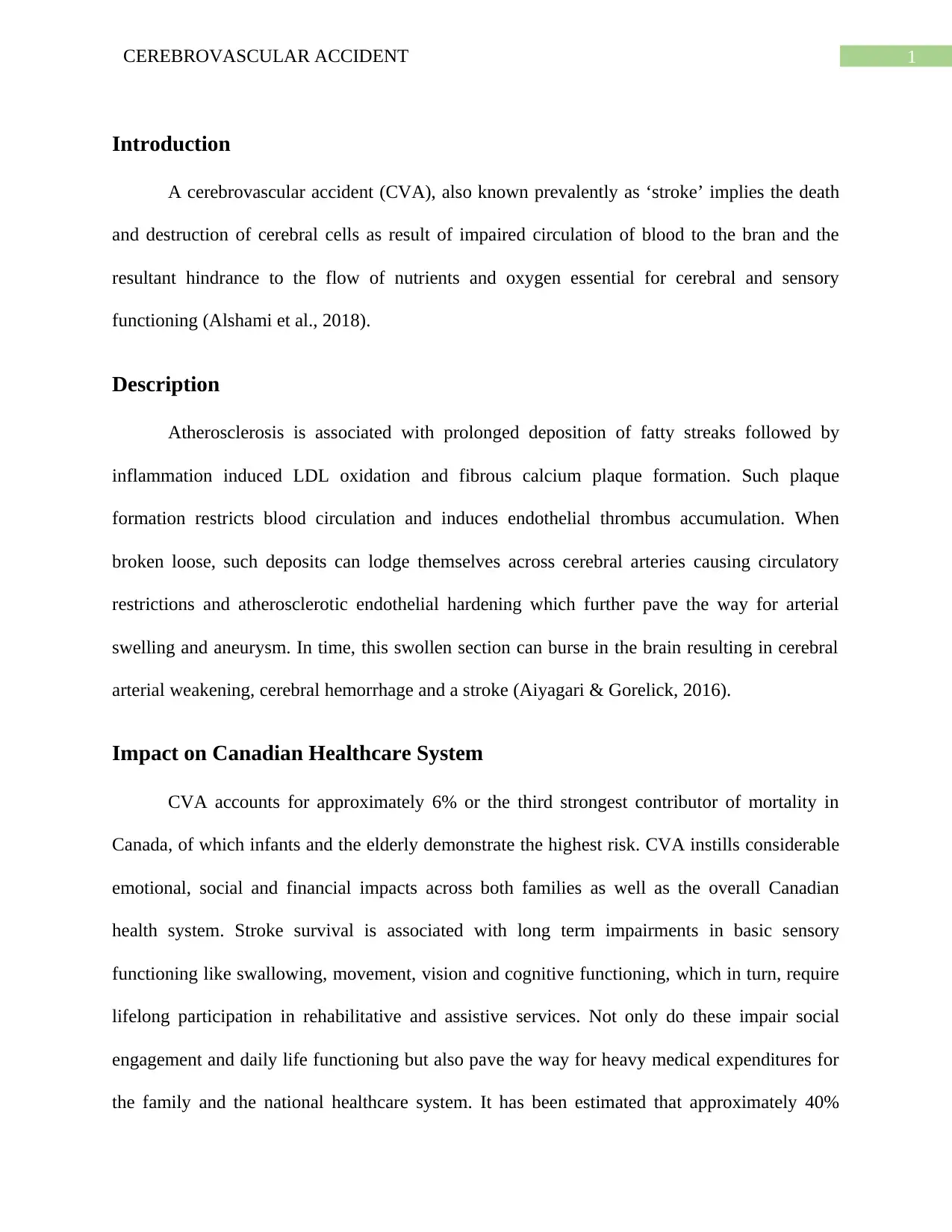Cerebrovascular Accident: Report Analysis and Impact
VerifiedAdded on 2022/08/12
|4
|461
|36
Report
AI Summary
This report examines Cerebrovascular Accidents (CVA), also known as strokes, focusing on their causes, impact, and implications for the Canadian healthcare system. It begins by defining CVA as the result of impaired blood circulation to the brain, leading to cellular damage. The report delves into the pathophysiology of atherosclerosis, explaining how plaque formation restricts blood flow and can lead to cerebral arterial weakening and strokes. It then explores the impact on the Canadian healthcare system, highlighting the high mortality rate and significant emotional, social, and financial burdens associated with CVA. The report also addresses the long-term impairments experienced by stroke survivors, the need for rehabilitative services, and the associated healthcare costs. Additionally, the report references several studies and publications to support the information presented. Overall, the report provides a comprehensive overview of CVA, covering its causes, effects, and importance within the context of healthcare.
1 out of 4






![[object Object]](/_next/static/media/star-bottom.7253800d.svg)